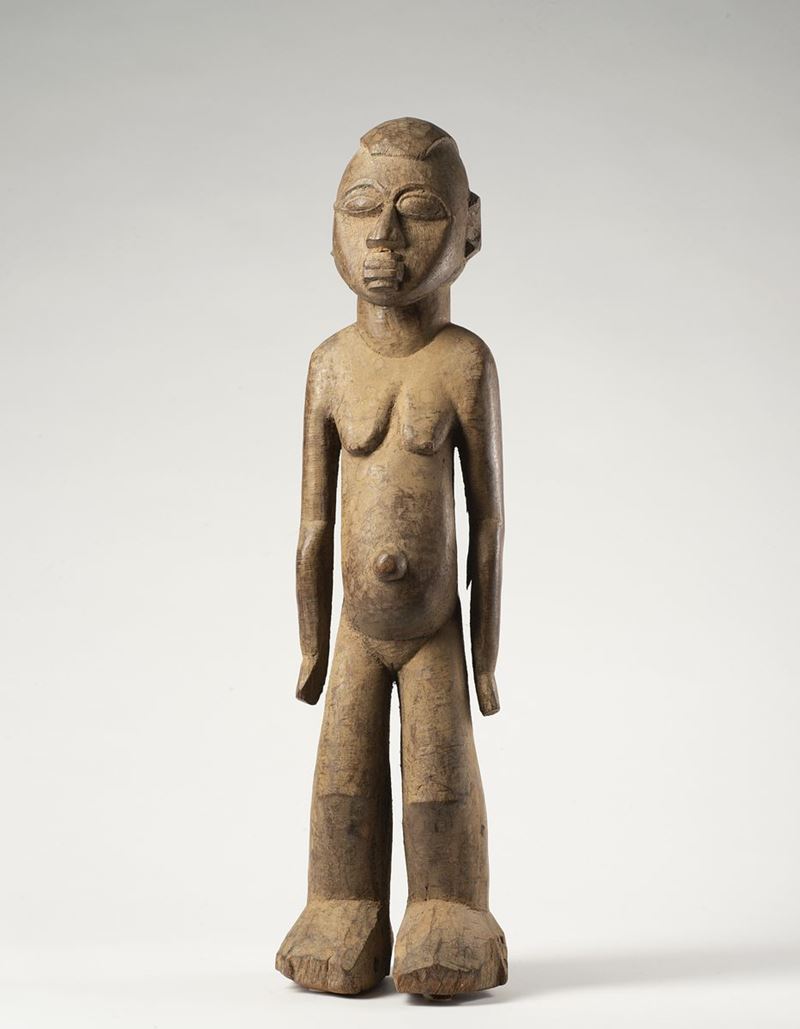Information
H 65 cm
Female figure of an ancestor.
Female sculpture carved according to Lobi tradition. The body, facing the front, is depicted with its arms out, a prominent navel and legs of exaggerated dimensions. Its head, held up by a powerful neck, is marked with shaved hair in line with the region’s fashion. The mouth allows a glimpse of a labial plate, a distinctive archaic mark. The heavy hardwood is covered with a thick, crusted coating.
Provenance
- Former Paolo Morigi collection (Lugano) (Morigi inventory label num. 416);
- Former private collection (Lugano);
Exhibition
Literature
- VENTURI LUCA M. “Anime antiche, arte negra, da una raccolta di sculture dell’Africa occidentale” BSI Bank, Lugano 2002, fig. 78;
- HOLAS B. “Arts de la Cote d’Ivoire: Les trésors du Musée d’Abidjan” Vevey 1969, page 162;
- KERCHACHE JAQUES “Scultura Africana: Omaggio a André Malraux” Rome 1986, pages 90-105;
- ANTONGINI GIOVANNA & SPINI TITO “Il cammino degli antenati: I Lobi dell’Alto Volta” Bari 1981;
- BOGNOLO DANIELA “Visions d’Afrique: Lobi” Milan 2007;
- SKOUGSTAD NORMAN "Traditional Sculpture from Upper Volta " New York The African American Institute 1978, page 30;
- GOY BERTRAND “Cote d’Ivoire - Premieres regards sur la sculpture - 1850 / 1935” Paris 2012, page 135
(*) Edmond Morlet (Brussels). Morlet was a Belgian trader based in Brussels before the Second World War. In 1930, he travelled to the then-Belgian Congo where he collected several Yombe works, among other things. In 1935, one of his Wobé masks was put on display at the Ethnographic Museum of Geneva (MEG). His most important work, a Mbole statue, which depicted someone who had been hanged (Ofika), was acquired in 1955 by the Metropolitan Museum of Art of New York (MET) after passing through various collections.
Contact
Condition report
Suggested lots
Caricamento lotti suggeriti...









